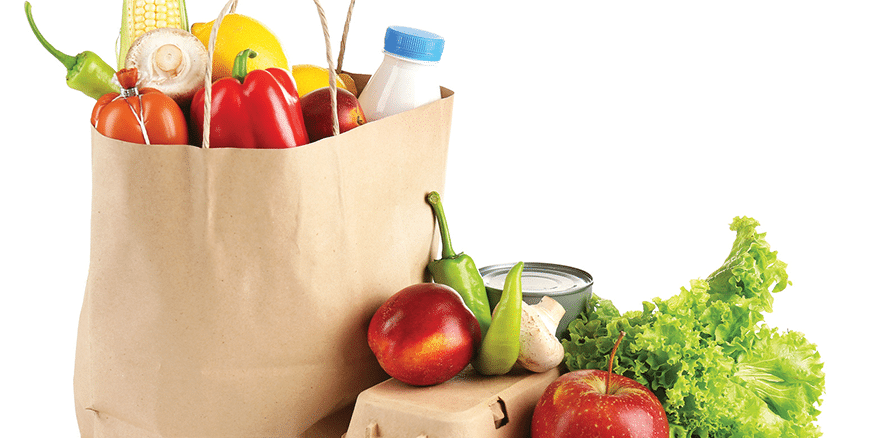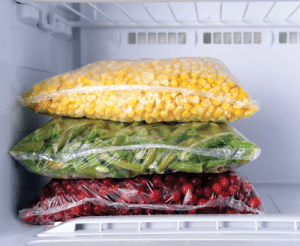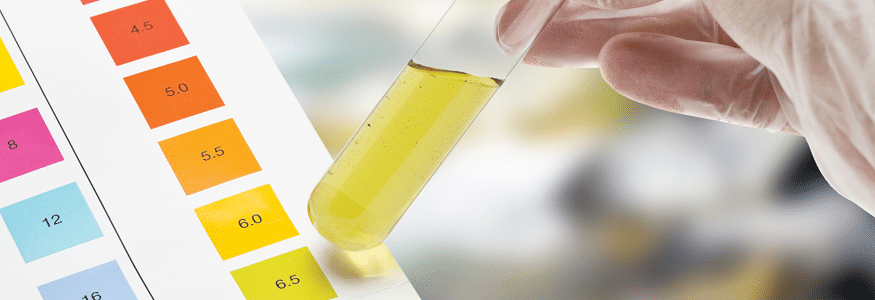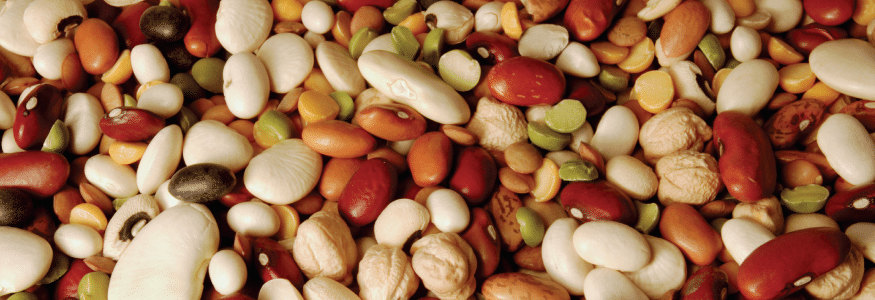
Four Myths About Food and Nutrition
If you have a gastrointestinal (GI) disease or disorder, something as simple as eating can become complicated, which can cause nutritional deficiencies or questions about which foods are safe to consume. There are diseases such as Crohn’s and celiac that hinder the body’s ability to absorb certain nutrients adequately due to inflammation or other damage in the small intestine. In other GI ailments, symptoms such as nausea, vomiting, or fear of pain in the digestive tract can cause those affected to reduce the amount of food they consume or modify their diet in other ways, even by eliminating entire food groups, in their ongoing quest to quell symptoms. These behaviours can lead to inadequate nutrient intake, which is why we advise anyone living with a gastrointestinal disease or disorder to consult a registered dietitian, who can help ensure that you are still meeting your nutritional needs.
There is an abundance of nutritional advice listed across the internet, television, books, and magazines. However, most of these claims are unsubstantiated, yet many individuals turn to these quick resources to get advice on their nutritional needs, rather than see a dietitian. Even your best friend might try to convince you to eat certain foods. Who should you turn to? Who should you trust?
We’ve already mentioned in past articles that gluten often gets a bad rap, even though it causes no problems for those who don’t have celiac disease or a gluten sensitivity, which altogether comprise about 6-7% of the population.
In this article, we will review the facts and fabrications surrounding some common nutrition myths.

MYTH: Raw Food is Better Than Cooked
You may have heard that fresh fruits and vegetables are more healthful than cooked options because cooking destroys nutrients.
It’s true that the act of heating up food while cooking can destroy certain nutrients. Vitamin C is a fairly unstable compound, and exposing it to oxidation and high heat can damage it. The method of cooking can also make a difference. Certain vitamins are water soluble, which means they can seep into the water when boiling or steaming. In these cases, tossing the water means tossing the vitamins. However, if you boil veggies for a soup and keep the water for the broth, then you retain most of the benefits.4
On the other hand, some nutrients actually become more bioavailable when cooked.5 Cooking breaks down the fibrous walls of plant foods, which makes it easier for you to absorb certain nutrients that are closely bound to parts of the plant that are difficult to digest. If you cook tomatoes, the amount of bioavailable lycopene and phytonutrients increases.6 If you consume your tomatoes cooked, it takes fewer tomatoes for you to get the same amount of lycopene than it would if you ate them raw. Lycopene is an antioxidant that may help to prevent cancer, especially prostate cancer.7
CONCLUSION: Eating a variety of fresh and cooked foods is your best bet.
MYTH: Fresh Produce is Always Best
 Biting into a ripe apple plucked straight from a tree is a delicious experience, but it is not one that’s easily replicated when buying produce from the grocery store. It makes intuitive sense to imagine that fresh fruits and veggies are healthier than their frozen counterparts; when you compare the food in its natural, brightly-coloured form to that in a plastic bag in the freezer aisle, it seems so obvious that fresh is better. However, the produce you purchase from an average grocery store, or even a high-end organic store, is often quite old. Before you bring it home, it goes through harvesting, processing, packaging, shipping, and then lands in your grocery store. Fresh produce can be days to weeks old, depending on the type of produce and where it was grown, and has lost some nutrients. It’s no longer quite the same as that tree-plucked apple. Since the produce has to make it through all that shipping without rotting, farmers sometimes pick the produce before it is ready, and then shortly before selling them, use ripening sprays made from calcium carbide or synthetic ethylene,1 which cause a reaction that mimics the natural ethylene ripening that produce typically undergoes.
Biting into a ripe apple plucked straight from a tree is a delicious experience, but it is not one that’s easily replicated when buying produce from the grocery store. It makes intuitive sense to imagine that fresh fruits and veggies are healthier than their frozen counterparts; when you compare the food in its natural, brightly-coloured form to that in a plastic bag in the freezer aisle, it seems so obvious that fresh is better. However, the produce you purchase from an average grocery store, or even a high-end organic store, is often quite old. Before you bring it home, it goes through harvesting, processing, packaging, shipping, and then lands in your grocery store. Fresh produce can be days to weeks old, depending on the type of produce and where it was grown, and has lost some nutrients. It’s no longer quite the same as that tree-plucked apple. Since the produce has to make it through all that shipping without rotting, farmers sometimes pick the produce before it is ready, and then shortly before selling them, use ripening sprays made from calcium carbide or synthetic ethylene,1 which cause a reaction that mimics the natural ethylene ripening that produce typically undergoes.
Of course, if you are eating produce that you freshly picked from your garden, purchased directly from a local farmer, or produce that naturally lasts a long time (such as root vegetables), then this doesn’t apply.
Paradoxically, where frozen produce is concerned, suppliers typically harvest fruits and vegetables when they are perfectly ripe and freeze them immediately after harvesting them. This means that you end up with a product that is frozen in time with its nutrients intact and no need for ripening sprays. They also tend to be less pricey than fresh produce.
The process is similar for canned foods, and since cans last long and don’t need to be kept cool during transport, they can be an inexpensive addition to the diet.2 Just make sure to choose fruit soaked in water or juice rather than a thick syrup, and limit or rinse vegetables and beans with a high sodium content. While it is important to be aware of the potential of BPA, most cans in Canada have either no BPA or low enough levels that the Canadian Food Inspection Agency considers them safe.3
Fresh produce from the grocery store is still a great choice. However, you don’t need to shy away from frozen or canned fruits and vegetables if it suits your lifestyle or the dishes you are making. Frozen and canned vegetables go well in stir fries and soups, canned fruit makes a quick and easy snack, and you can add frozen fruit to smoothies, baked goods, and oatmeal. Whichever way you eat them, consuming a wide variety of fruits and vegetables is important.
CONCLUSION: Frozen and canned produce are inexpensive sources of nutritious fruits and vegetables.

MYTH: Eating Certain Foods Can Make Your Body Alkaline
Proponents of what is called the ‘alkaline diet’ or ‘alkaline ash diet’ claim that if you eat certain foods your body will become more alkaline, which supposedly leads to better health, while other foods can make your body more acidic, leading to illness. However, their definition for alkaline is not straightforward.
We use the pH scale to describe the acidity of various items. Vinegar has a pH of 3, which is very acidic, pure water has a pH of 7, which is neutral, and baking soda has a pH of 9, which is alkaline (also called basic). When people speak of the alkaline diet and alkaline foods, they aren’t referring to the pH of the foods themselves, but rather of the behaviour they exhibit in the body. When your body digests certain foods, the remains, called ‘ash’, are either acidic or alkaline, depending on the food. The idea is that this ash affects the pH of various parts of your body, causing beneficial or negative effects.
Human blood is always a pH of 7.35-7.45.8 Blood that is more acidic indicates a severe disease state called acidosis that, if untreated, could lead to death. Blood that is more alkaline indicates alkalosis, which can also be dangerous. Other areas of the body have larger safe pH ranges, but they still need to remain in these ranges. For example, the skin typically has a pH between 4 and 7, but functions best when the pH is under 5 (which is acidic).9 Thankfully, our bodies do an amazing job of keeping our pH levels balanced, other than in extreme circumstances. As you can imagine, with such stringent specifications of healthful pH, it would be disastrous if the food we ate could easily affect our pH levels.
Your kidneys, liver, and lungs work to eliminate any compounds in your system that would affect pH. However, the pH of your urine can vary greatly depending on what you eat, since it is the process through which the body eliminates most of these waste products. Because of this, some people monitor their urine pH and use the results to judge the accuracy of the alkaline ash diet, even though the results of urine pH are not indicative of anything else in the body.10
Nevertheless, when it comes to your mouth, paying attention to pH is important. One good example is lemon juice, which is often touted as an alkalizing food. It doesn’t actually have an alkalizing effect on your body and the lemon itself is very acidic, with a pH of 2-2.5. This means that consuming large quantities of lemon juice for its supposed alkalizing benefits can actually be potentially damaging to your teeth due to its acidity.
Many of the foods that are considered alkaline (typically vegetables, fruits, legumes, etc.) are very nutritious foods that are beneficial to the body in many ways, but changing its pH isn’t one of them. This is why many people who start the alkaline diet might feel better, not because it is alkalizing their bodies, but because it encourages people to consume more nourishing foods and reduce the amount of processed food they consume. However, in the long run this diet might be lacking in certain nutrients, such as essential fatty acids.
CONCLUSION: You can’t change the pH of your body by eating certain foods.

MYTH: Phytic Acid Makes Grains and Legumes Poor Food Choices
You may have heard that some foods, such as wheat and beans, can actually prevent the absorption of certain nutrients. This is caused by a compound called phytic acid, which is found in most plants, but in especially high quantities in grains and legumes. Phytic acid prevents the absorption of minerals such as iron, calcium, manganese, and zinc by binding to them before your body can absorb them.11
Plants store phosphorus in a compound known as phytic acid. Phytic acid can bind to other minerals, such as those mentioned above, and in doing so creates phytates. Our bodies do not have any enzymes capable of breaking down phytates, so we are unable to absorb those nutrients.
However, by the time most of these foods get to our plate, they no longer contain enough phytates to cause problems. This is because sprouting, cooking, baking, processing, soaking, fermenting, and yeast leavening all help to destroy phytates. Since we typically don’t consume completely raw and unprocessed grains and legumes, by the time we consume these foods the amount of phytates remaining is considerably lower. In addition, there might even be health benefits to consuming phytic acid, which has anti-inflammatory and antioxidant effects.12
Most of these foods contain a wide array of nutrients, and many individuals consume them safely on a daily basis. The phytic acid does affect the total amount of minerals you absorb, but you still end up absorbing plenty. It only affects the meal that you consume them in, so eating a phytate-heavy lunch will have no influence on the amount of minerals you absorb from dinner. Avoiding these foods due to the fear that you aren’t absorbing the minerals can cause you to miss out on many nutrients. However, if you currently have mineral deficiencies (such as iron or zinc), you might want to limit your intake of phytic acid, or speak with a registered dietitian or your physician about any concerns.
CONCLUSION: Yes, phytic acid can bind to other minerals, but it doesn’t prevent you from absorbing all of the nutrients, and phytic acid itself might be beneficial.
Absorption Friends and Foes
There are some minerals that your body can have difficulty absorbing unless you combine them with other nutrients. If you want to boost your absorption of calcium, consume it with vitamin D.13 If you are trying to absorb more iron, combining it with vitamin C does the trick.14
The vitamins A, D, E, and K are what is known as fat soluble, which means you can’t adequately absorb them unless you consume dietary fat at the same time.15
On the flip side, some compounds make it more difficult for you to absorb nutrients. Tannins, which are a type of plant compound found in tea, coffee, and cocoa can strongly inhibit absorption of iron.16















